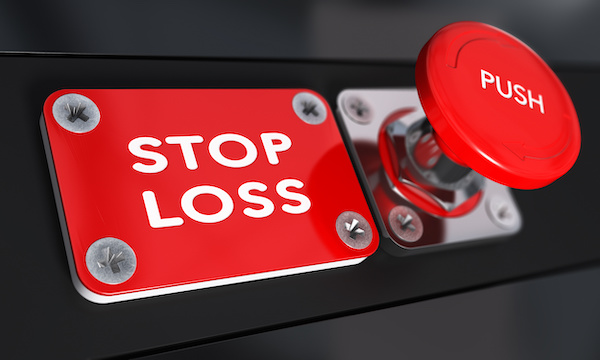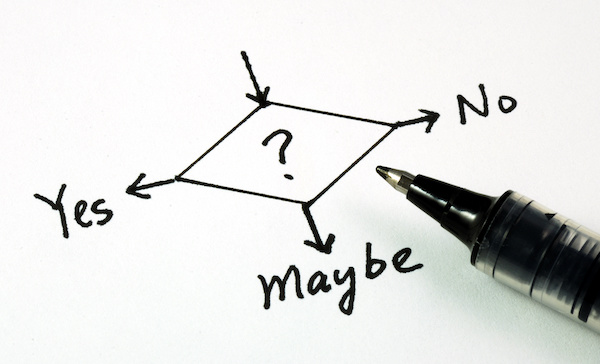
To limit trading risk, savvy investors use many trading strategies, one of which is a stop-loss order. We like to compare stop-loss orders to bowling. Bear with us here. If you’ve ever been to a bowling alley with kids, you’ve seen “bumpers” on the lanes. The bumpers stop the ball from going off the rails and tanking the poor kid’s score. Stop-loss orders are just like the bumpers — but for investing.
Sounds simple enough, right? After all, we all want high-yield investments. And who wouldn’t want to stop the bleeding when a trade turns out differently than you had hoped?
If you’re building your investment knowledge, you’ve come to the right place. In this article, we’ll discuss what stop-loss orders are, the different order types, and how to determine if you should incorporate this trading strategy into your investment decisions.
What Is a Stop-Loss Order?

Long ago, the only investment advice many people ever received was buy and hold. But today’s investors need an exit plan in order to keep risk at an acceptable level. A stop-loss order is exactly that.
Although the strategy goes by many names — including limit order and stop-limit orders — a stop-loss order is an offsetting order that enables an investor to exit a particular trade once the underlying asset hits a certain share price, known as the stop price or the stop-loss price.
Traders usually place stop-loss orders when they initiate a trade. The stop-loss order can be modified at any time and costs nothing to implement. If you use an online brokerage, you simply pay your normal commission only once the stock reaches the stop-loss price and the stock is sold. It’s essentially a free insurance policy.
When a trade turns out not to be in your favor, having a stop-loss order will produce a very different outcome. If a stock you just bought takes a nosedive while you’re not looking, a stop-loss order can sell that stock for you before too much damage occurs. You can set it and forget it. Without a stop-loss order, you’re on your own.
There are two types of orders: sell stop-loss orders and buy stop-loss orders.
Sell Stop Orders
Let’s imagine you spend $1,000 to buy 100 shares of stock XYZ at $10 per share and place a stop-loss order with a specified price of $8.50 per share.
Your stop-loss order will go into effect when the stock market price reaches $8.50. You’ll most likely sell the stock at $8.50, lose $1.50 per share, and prevent any additional loss should the stock price dip even lower.
Keep in mind, however, that you’re not guaranteed to sell at exactly $8.50 since a sell-at-market order executes once your stock price reaches $8.50. In other words, the stock will be sold at market price, which may be higher or lower than $8.50 depending on how liquid the stock is and how fast the price is dropping or rebounding.
The premise with this sell stop order is, “I’m limiting myself to $1.50 per share of loss, or in the case of 100 shares, $150.”
Some logical questions and answers are probably coming to mind. We’ve flushed some out below.
Q: What if the price never dips down to the stop price of $8.50?
A: Your stop-loss order will do nothing.
Q: What if the price hits $8.50 but then rebounds up to $12?
A: Your stop-loss order will have sold your shares, and you’ll miss out on the rebounding price
increase.
Q: Do sell stop-loss orders work no matter what?
A: Not necessarily. Because stop-loss orders are typically “market orders,” the trade executes at the next available price once the stock’s price has reached the stop price, or $8.50 in the above example.
If no investors are willing to buy the shares at the stop price, something called slippage happens. Slippage is when the price keeps “slipping” until someone is willing to be on the other end of the trade. In the above example, slippage would have occurred if XYZ sold at $8.25 per share instead.
Q: Are stop-loss orders only for stocks I’ve already purchased?
A: Nope. Keep reading to learn about buy stop-loss orders — or stop-loss orders on stocks that you want to buy.
Buy Stop Orders
Investors will generally use a buy stop-loss order to limit losses on stocks that they have shorted.
Let’s unpack short selling a bit.
Understanding How Short Positions Play a Role in Stop-Loss Orders
When shorting a stock, the investor anticipates a dip in the market price. The investor “borrows” the stock, sells it at market value, and then buys the stock back to return it to the original lender.
Take your time and read through that again. No shame in that. It’s confusing stuff.
Short sellers are betting that the borrowed stock will drop in price once they sell it.
The difference between the sell price and the purchase price is the profit (or loss).
Sell Price – Purchase Price = Profit (or Loss)
If the stock behaves as the investor anticipates and the price drops, great. The seller purchases back the stock at the lower price and returns the stock to the original lender. No problem.
But if the stock behaves in a way the short seller hasn’t anticipated and the price moves higher, there’s a problem. The short seller now has to buy the stock back at more than they sold it for in order to return it to the lender, which is a potentially huge problem.
And this is where the stop-loss order comes in.
A buy stop-loss order has a stop price above the current market price.
So let’s assume you’ve shorted stock XYZ at $10 per share. This means you’ve borrowed it and then sold it at $10.
You’re waiting to see how the market plays out. But you don’t want to be caught unaware if the price shoots up suddenly. (Remember, if the price goes up instead of down, you lose money on the short sale.)
Based on your risk tolerance and the amount of loss you’re comfortable with, you place a buy stop-loss order at $10.25, or some amount above the current market price. The shares will automatically be repurchased if the price rises to $10.25, and you cap your loss amount.
Are Stop-Loss Orders Right for You?

Let’s go back to the bowling analogy for a minute.
When you get to the bowling alley, getting the bumpers set up takes a little bit of extra time. You’ve got to talk to the kid at the desk and wait for the bumpers to get installed.
But that little bit of upfront investment pays huge dividends when your kid isn’t crying and whining about how much they stink at bowling. Am I right?
It’s the same with stop-loss orders.
If you spend a bit of time understanding the concept — which you are already doing, so congratulations! — and setting yourself up for success with future trades, you’ll be happy that you did.
Whether stop-loss orders play into your strategy, well, that is up to you.
Of course, understanding how stop-loss orders work isn’t the only thing you need to understand. In today’s market filled with so much volatility, there are risks involved — even with strategies designed to limit risk, like the stop-loss order. So, just like with any investment decision, be sure to do your due diligence before executing any trade.
Finding the Best Stocks Is Always the Best Play
Make no mistake, when utilized properly, stop-loss orders can protect you when the market is choppy. And they can protect you from encountering significant losses. But “can” is the key word here.
Regardless of whether or not you choose to start using stop-loss orders, identifying the right stocks and adding them to your retirement portfolio is always the best first step on your investment journey. If you choose to protect those carefully selected stocks with stop-loss orders, all the better!
To get the latest recommendations of high-quality stocks — and those that provide income through dividends — that you’ll want to buy and hold forever, subscribe to Investors Alley’s “Dividend Hunter” newsletter.





